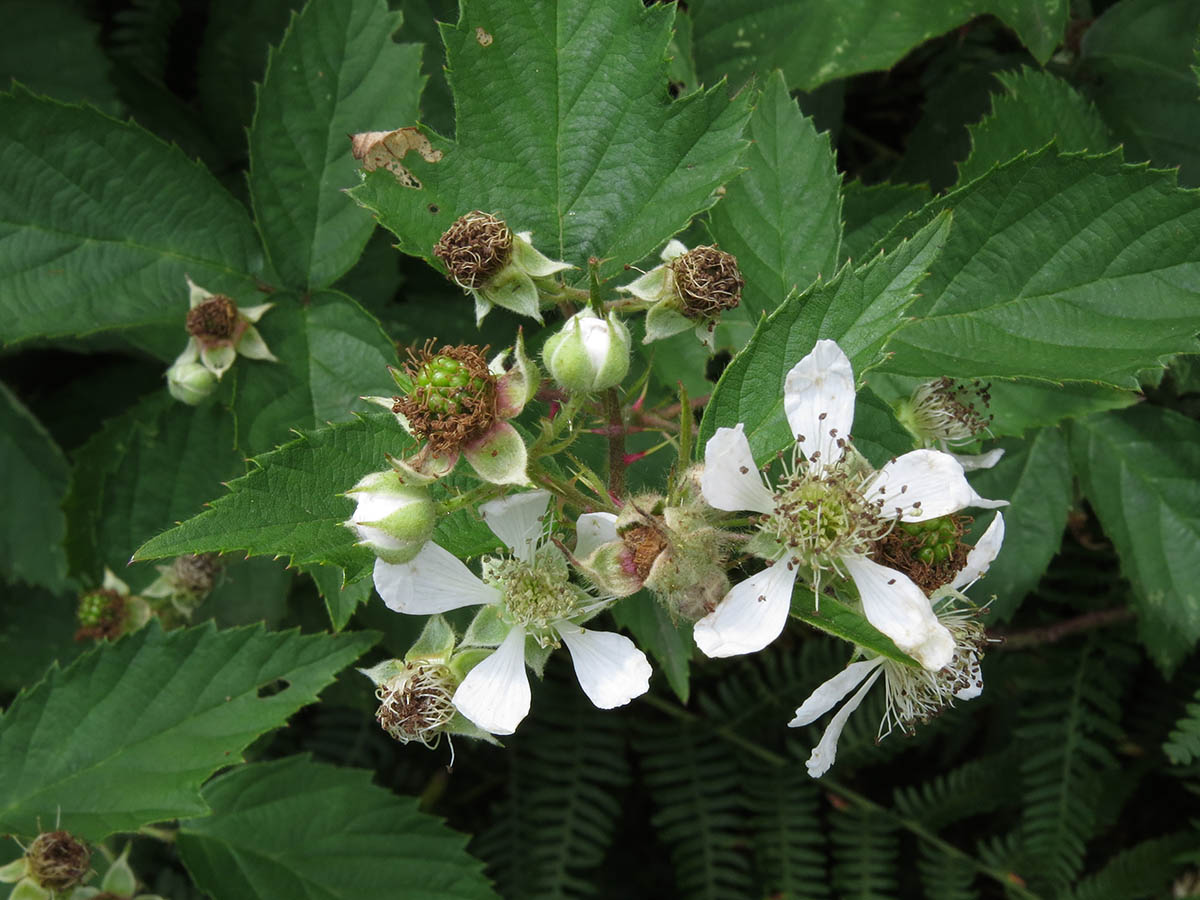
Rubus Forest of Bere salteri
– Series Sylvatici
back to Alphabetical index · Taxonomic index
A widespread bramble of woods, heaths and commons in southern Hampshire, known by botanists for over a century, but which has never been formally described and named. It was given the nickname Forest of Bere salteri
by Rubus specialist David Allen after the now fragmented medieval royal hunting forest which historically occupied a large part of the county to the east of the New Forest. The stems are eglandular, so it is placed in series Sylvatici but it does have some short-stalked glands in the panicle and grey-felted leaflets so it may be more appropriate to put it in the Rhamnifolii. The flowers have eye-catching long, narrowly obovate white petals. The leaves have distinct toothing and are pleated and concave in open-grown plants.


Forest of Bere salteri is a medium to high-arching robust species. The panicle is pyramidal, elongated, with a cluster of flowers at the apex; it is leafy almost to the apex with narrow single leaves near the top and some Bishop's mitre
shaped leaves lower down (a single leaflet with two basal lobes at 45 degrees). These have the same characteristic toothing as the stem leaves (see below). The rachis is straight to flexuose with long, fine, straight, declining prickles, which also occur on the floral branches.


Flowers are about 3cm across, with white narrowly obovate petals 11-13 x 5-6mm, gradually narrowing to the base and often with a small apiculate tip or tiny notch at the apex. Stamens are a little longer than the styles when viewed from the side. Filaments are white, anthers are usually glabrous but rarely a single hair has been recorded; styles are pale green, carpels glabrous or slightly hairy, receptacle hairy.



Sepals are narrowly triangular, pubescent with some acicles and occasionally a few very short-stalked glands. They have thin white borders and a medium-long fine tip; they are patent when the petals open, but become loosely reflexed later. The pedicels and stipules also have some short-stalked glands.

Leaves have occasionally 3 or more usually 5 leaflets, which are a yellowish or greyish-green colour, often slightly matt in appearance and glabrescent above. The petiolules of the terminal and middle leaflets are relatively long, so the leaflets are not touching. The toothing is dentate (shallow) near the base, becoming progressively more deeply serrate up the margins. Some of the lateral teeth are patent to slightly retrorse (with the tip pointing backwards). In open grown bushes the leaflets become quite strongly pleated, somewhat rugose and concave because the margins curl inwards.



The terminal leaflet is obovate with a narrow rounded and slightly indented base and a broadly rounded to truncate apex. The leaf tip is long acuminate and often curved to one side.

A leaf from a shade-grown plant:

Leaflets are greenish-grey felted below, especially in the panicle.



Underside of a panicle leaflet:

The first-year stem is angled with flat to slightly furrowed sides, becoming a dark red to deep purple colour when exposed to the light. It is thinly hairy and usually without stalked glands, though very short-stalked glands have been noted and sessile glands are often numerous. Prickles are straight to slightly curved or bent, almost patent to downturned and frequent to numerous on the angles. They are longer than the stem diameter and have a long contrasting yellow tip.




A green stem growing in heavy shade:
